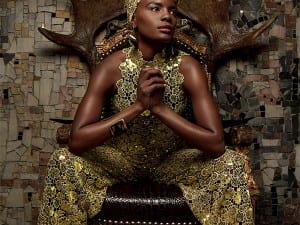The current exhibition at Brescia’s Museo di Santa Giulia, From Albers To Warhol (To Now), presents the Daimler Art Collection. Although this collection has never before seen in Italy, it has already travelled to museums in Singapore, Sao Paulo, Tokyo, Cape Town, Johannesburg, Buenos Aires and Vienna. The collection, consisting of more than 2000 works of art, a selection of which fills 12 rooms of the second floor of the Museum, is situated amongst the backdrop of Roman ruins and picturesque mountain ranges. The work focuses primarily on abstract aesthetics and spans the 20th century in a wildly compelling manner.
The rooms are appropriately grouped into more specific aesthetic relationships. These relationships carve the exhibition into a rollercoaster of dynamics, forever breaking into ones peripheral vision, this is particularly evident in the polished chrome of Alicaja Kwade’s Watches (2008). A perplexing echo emits around the room, coming from what one deduces as two clocks connected to one another, hanging face to face. Upon investigation, a flickering of light teases the viewer, as immediately to the right are two panes of glass set off from a wall. Joseph Kosuth’s 490 (+ 216, After Augustine’s Confessions) (1990) displays each pane of glass with an identical trademark existential text that has become synonymous with Kosuth’s work.
The negotiation of space and perception is extended throughout the exhibition, as Charlotte Posenke’s 4 Reliefs, Elements from Series B, Prototypes (1967) offers a perplexing interplay between depths and shape. The work consists of two metallic shells of cylinders cut in half and set on to the wall in pairs, painted in a deep magnetic blue. As the light scores down the flawless curves of the sculptures the juxtaposition of surface depths creates an illusion of uniformed flatness between all four parts of the work. The symmetry between Charlotte Posenke’s sculptures is later echoed by Sylvie Fleury’s 2005 film commission for the Mercedes Benz factory in Paris for which six films were produced. Occupying the largest of the 12 rooms, the viewer is plunged into darkness upon entering the room. Suddenly three images explode out of this darkness on three separate screens placed side by side. On the far left and far right screen is, what at first appears to be, a close up shot of an exhaust mirroring one another. On the central screen a white Mercedes roadster is encompassed by two women and a man in an immaculate factory. The man proceeds to start the engine and periodically accelerate the engine. At that precise moment the two exhausts on the side screens, which up to this point had been dormant, sputter and spit flames while they rumble into action, almost in dialogue to one another as the flames persistently flicker. The prominent difference in this case is the breathing room which Fleury’s films command, compared to the increasingly immersing amount of information in the rest of the exhibition.
The unique insight into abstract art offered by the Daimler Art Collection has the ability for discovery at every turn. However, what it also does with great grandiose is form inextricable links and echoes of aesthetic beauty in a seamless and timeless fashion. Works by such monumental figureheads such as Warhol and Hockney, together with less known but equally as impressive contemporary artists enter a truly delectable symposium that wouldn’t be found anywhere else.
From Albers To Warhol (To Now), Museo di Santa Giulia, via Musei 55 – 25121 Brescia
William Davie
Credit
1. John M Armleder (*1948 a Ginevra, CH; vive a Ginevra, CH) Avec les deux lustres [Con i due candelabri] (FS), 1987–1993, Acrilico su tela, 2 lampadine, Tela: 300 × 200 cm, insieme: 300 × 425 cm, Daimler Art Collection Stuttgart/Berlin, acquisizione 2003.





